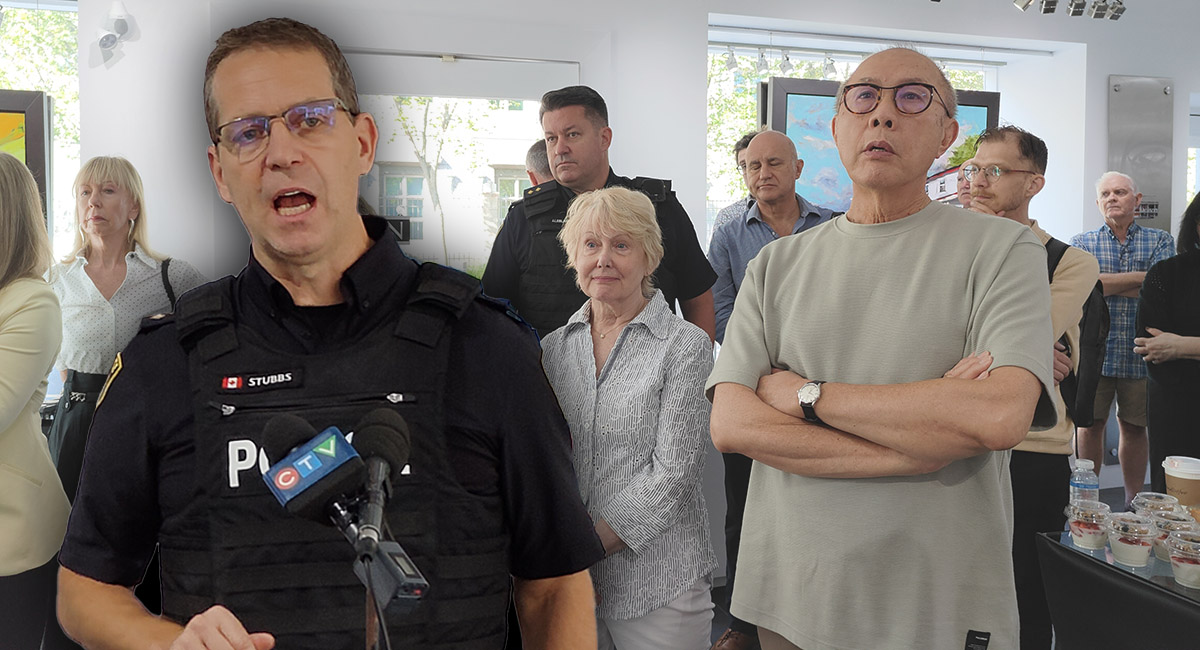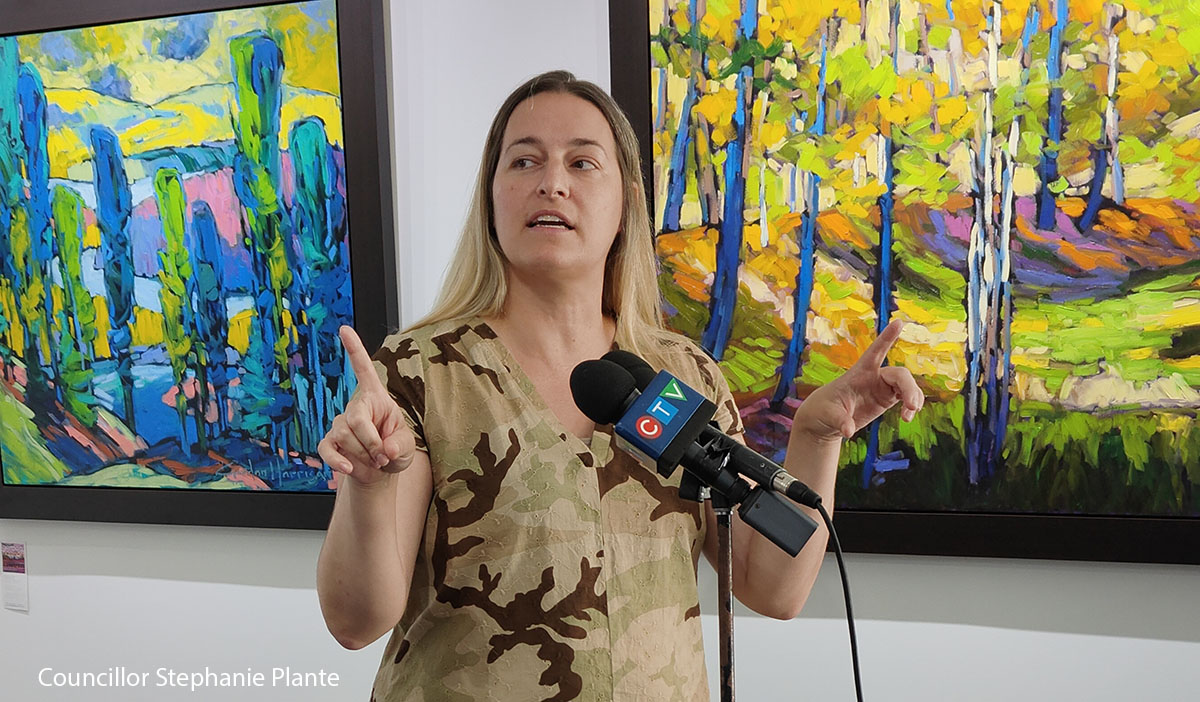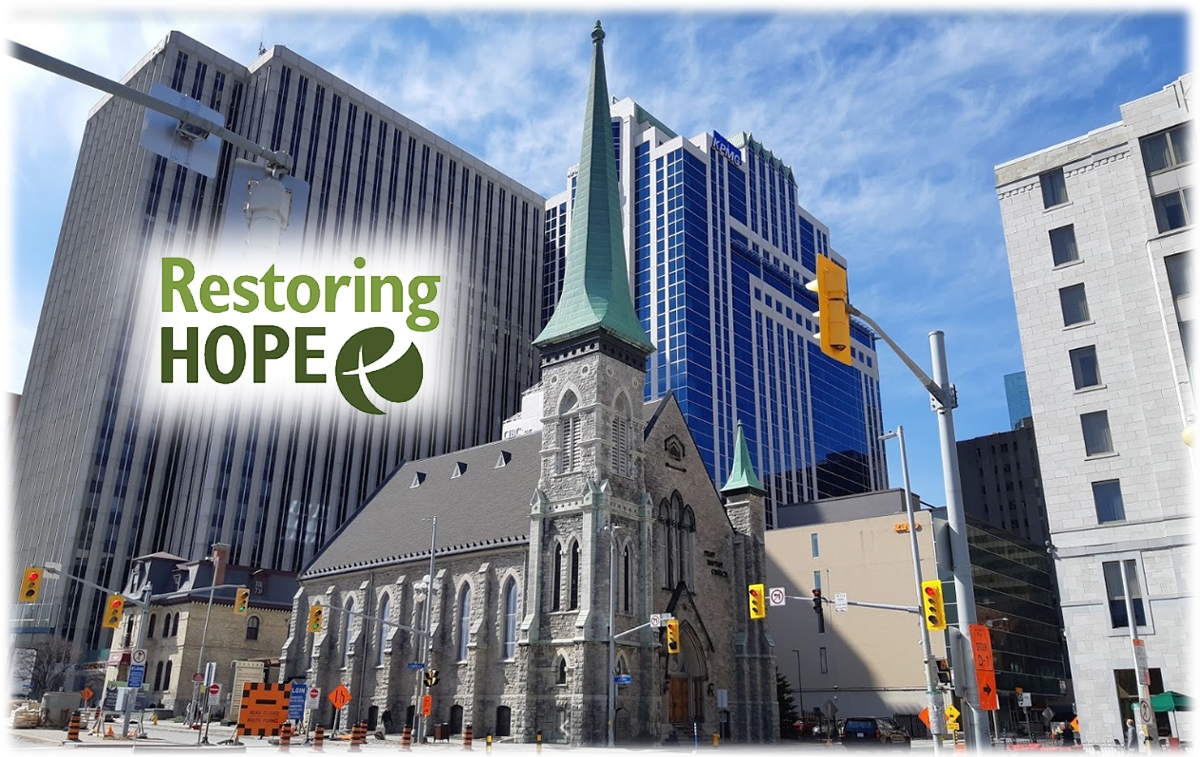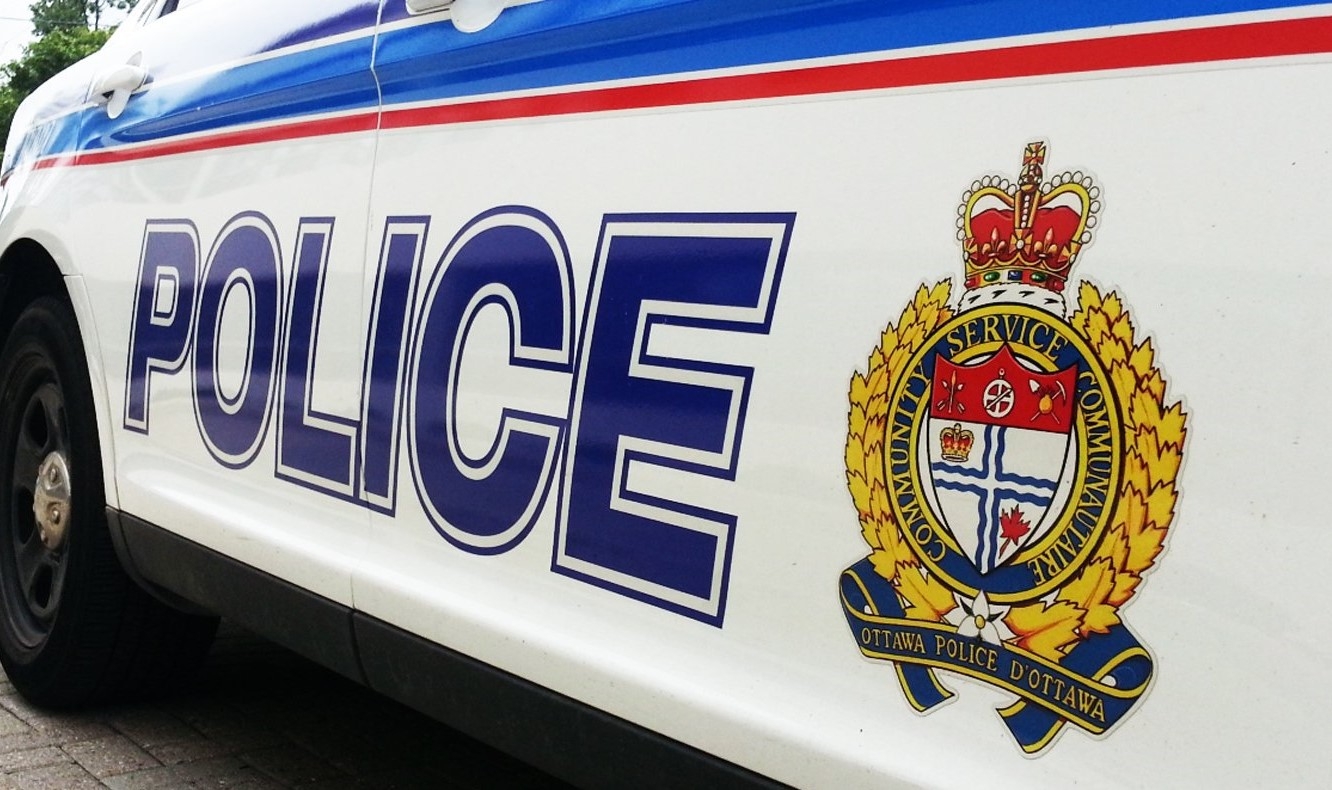
Ottawa Police, BMDA Pledge Support To Struggling ByWard Merchants
In 2027, Ottawa’s ByWard Market will turn 200 years old. The outdoor shopping precinct is always abuzz with activity, popular with both locals and tourists. Unfortunately, in recent years, it has also earned a notorious reputation due to violent crime, theft, vandalism, drug addicts and the homeless spilling over from the four shelters in the area.
This July, a group of retailers from ByWard Market led by Phil Emond, owner of Gordon Harrison Canadian Landscape Gallery, sent an open letter to Mayor Mark Sutcliffe, Rideau-Vanier Ward Councillor Stephanie Plante, the ByWard Market District Authority(BMDA), Ottawa Police Chief Eric Stubbs, the head of the National Capital Commission (NCC) and Minister of Canadian Heritage Pascale St-Onge, stating how issues such as the overdose crisis, homelessness, increasing crime and a lack of long-term parking are affecting the vibrancy of the Market. The letter asked for a short-term plan and a five-year plan to be communicated to all retailers and residents of the ByWard Market.
Local businesses also sent another email to city officials and media outlets earlier this year alleging that their customers were feeling unsafe because of being harassed by anti-social elements. Last year, ByWard Market business owners met with city officials to air their grievances and asked the city to take immediate action. These appeals follow the letter sent by 15 ByWard Market business owners to various city officials in November 2021 outlining their frustration with the city’s response to illegal activities and vagrancy in the ByWard Market.
In an effort to address these issues, Eric Stubbs, Chief of Police of Ottawa Police Service (OPS) and his team held a meeting with the Market’s retailers on September 20 at the Gordon Harrison Canadian Landscape Gallery in ByWard Market.
Enhanced OPS presence and funding
Stubbs said he has been working with the federal government over the last year to secure funding for dedicated police resources in identified city hotspots. He pointed to the $543 million deal announced in March between the Ontario government and the City of Ottawa, which included investment in revitalizing Ottawa’s downtown economy and improving public safety. In May, the Ottawa Board of Trade also announced a $500 million Capital Investment fund aimed at enhancing the downtown’s image.
Stubbs further outlined plans for a mounted unit expected to be launched by April 1, 2025, some of whom will patrol the ByWard Market, while stating how the Market Safe Program – which has seen more police presence in the Market during bar closing time, has been helpful in suppressing crime. He said OPS would work towards a 24/7 presence in the Market as more resources become available.
OPS said earlier this year that it will receive $48 million from the Ontario government over three years to address community and public safety, including an increase in uniformed police officers in the ByWard Market.
Acknowledging the myriad demands on the police, which are challenging considering Ottawa’s size, Stubbs said, “We have hired more members this year than we ever have, and that’s going to continue over the next two years, in order to better serve the community. We’re also going into district policing across the South, East, West and Central districts to ensure dedicated community policing resources.”
The OPS tabled a draft operating budget worth $372.4-million for 2024, with the proposed spending plan representing a $13.4-million increase over 2023.
NOC and community policing
A/Sergeant Paul Stam, who leads evidence-based policing and CORE strategy at OPS, spoke about how the Neighborhood Operations Centre (NOC) in the Rideau Centre that opened in June has been instrumental in enhancing the visibility and accessibility of police presence in the area. It has also allowed the Frontline Task Force to meet for weekly briefings with city partners, including Ottawa Public Health, Bylaw, OC Transpo, and public works, to find data-driven solutions to issues affecting the downtown core. This translates to hotspot patrolling at specific areas infamous for crime and social disorder – eight such areas around ByWard Market have been identified so far. Additionally, patrol officers will enhance intelligence-gathering efforts to crack down on drug traffickers responsible for violent crime to get them off the street.
According to the Ottawa Police Crime Map, there have been 156 assaults reported in the ByWard Market this year and 249 cases of theft of $5,000 or under, in addition to three cases of arson, 81 incidents of mischief, 62 break and enters, 19 robberies, and 26 incidents of theft of a motor vehicle. There have also been two shootouts and one major theft in the Market after the opening of the NOC.
While acknowledging that policing is a work in progress, Stam spoke about the launch of an integrated community situation table in April that includes over 30 partners who meet every two weeks to refer cases of individuals who are street-involved, justice-involved and who are primarily being engaged by law enforcement at the moment, but would be more effectively engaged by support services. “We refer those individuals to the table, and they get the support that they need,” he added.
Keith Nuthall, chair of Downtown Ottawa Condominium Alliance, proposed the establishment of a long-term English language rehabilitation centre in Ottawa to counter multiple shelters in the downtown core. “We need more decentralized services, more proactive services. Decriminalization is also a significant problem because it stops the police from being able to do the intelligence gathering that they need to break up these sophisticated drug dealer networks that harm the people we want to help. If you can’t arrest someone, you can’t interrogate them; you can’t get the intelligence they have. They know who sold them drugs. They know more about those distribution networks, and that’s what the police need. So enabling them by actually allowing cases to proceed at the judicial level is absolutely important,” he said.

Councillor Stephanie Plante, who was also present at the meeting, spoke about the need for more community-led programs for the youth to ensure they have healthy outlets. Regarding the homeless situation, she said, “I have 700 shelter beds in Ward 12, and those people need to transition to housing. We cannot think of just warehousing people overnight. We have to think about actually housing them.” She also urged merchants to take up the issues they face with their respective ward councillors so that they can join her in raising support to fix ByWard Market and the downtown core, given that it represents the second highest tax base in the city.
Ottawa Mayor Mark Sutcliffe and Zachary Dayler, executive director of the BMDA, were not present at the meeting. However, Dayler later spoke to OLM about BMDA’s programs to enhance public safety and economic activity in the Market.
BMDA initiatives
According to Downtown Rideau BIA’s Economic Well-Being Survey conducted in May, 45 percent of businesses in the ByWard Market said they were uncertain of extending their leases, while 21 percent indicated their businesses experience theft or shoplifting frequently. Costs attributed to theft last year totalled $107,800, according to the survey, which also noted that businesses in the Market cited several concerns, including decreased foot traffic, inflation, financial climate, construction, poor transit and access to downtown, safety, shoplifting, street issues and vacant storefronts.
However, Dayler pointed to multiple recent announcements of new businesses and hotels opening up in the district as evidence that investment and people are coming back. “In 2023, we had 18.9 million visits through the district. In 2024, we’re seeing an increase in foot traffic of 10-11 percent month after month. Additionally, steady progress is being made on the $129 million ByWard Market Public Realm Plan approved by the City of Ottawa in 2021,” he noted.
Dayler further mentioned that the OPS launched the Crime Prevention Through Environmental Design (CPTED) pilot this summer in coordination with the BMDA and the Rideau BIA. The program will conduct free CPTED audits on businesses and residential buildings that have been heavily impacted by the problems in the Market to strengthen safety in their locations by providing safety upgrades in terms of better lighting, more security cameras, and additional fencing gates. “This year’s selected participants will be eligible for financial incentives conditional to the implementation of the audit’s recommendations,” he added.
The BMDA also supports the Block Leaders Program, which engages with individuals living in the shelter system to find long-term solutions. While noting how the NOC is rooted in enhancing safety in the area, Dayler said the BMDA also sits on the Downtown Ottawa Safety Committee, which includes the OPS and other community partners to discuss these issues.
“Besides this, our Business Advisory Committee (BAC) conducts door-to-door visits to engage with businesses and provides their feedback to us. Our mandate is to be a partner on this topic, and so we work through a variety of programs to support the ongoing community issues. We also participate in numerous tables and held an open session for all businesses and residents in the area on July 6 that OPS was a part of,” Dayler added.
Merchants voice their concerns
Two weeks ago, Librairie du Soleil had its glass broken. According to owner Jean-Philip, “People have to make a lot of choices to come to the Market. They have to decide they don’t order online. They have to decide to get out of their neighbourhood and come downtown. Then they have to decide to walk out of the Rideau Centre and actually patronize our businesses. So if, at any point in that line, there are events that make them think twice about coming, it will be harder to get them to visit. I do think that the security issues we’ve faced is a deterrent,” he averred.
Lisa Pai, owner of L.A. Pai Gallery, which was among six stores broken into around the same time last year, echoes his concerns. “The perception that the ByWard Market is a dangerous place that people keep repeating without actually coming here is definitely an issue. I think every growing city has these problems, but we’ve located ByWard Market as the epicentre, which indeed it is, because of the drugs and the homelessness. Not only have these issues caused a significant drop in customers, but they have also driven several retailers away from the Market,” she said, adding that despite raising these issues multiple times, no communication had been received from the BMDA or the authorities and there was no improvement to conditions in the Market. “It’s really hard to run a small business and then have to take on this additional role of safekeeping,” she lamented.
Christine Shaikin, owner of Justine Studio says she has experienced a 25 percent loss in business this year. “The street closures, the protests, the significant dip in foot traffic in the Market, parking issues, homeless and drug addicts are all impacting my business, which is already reeling from a lack of rebound after COVID with more people shopping online. My insurance costs have also increased for alarm systems after an attempted theft,” she revealed.
According to Carmen Montemurro, co-owner of Silver Fox Barber Shop, customers are afraid to visit her salon in the evening, and Market residents avoid shopping for groceries at night because they are fearful of violence and gangs. “We need more lighting, more police patrolling and more security cameras,” she added.
Claude Bonnet, owner of Le Moulin de Provence, feels that more police presence is required between midnight and 9 a.m. “I open my shop at 6:30 a.m., and I see all kinds of incidents almost on a daily basis. There is a lot of talk, but we need to move faster to implement these initiatives,” he opined.
Emond of Gordon Harrison Canadian Landscape Gallery, who had a $1000 painting stolen and recently had a vandal threaten to destroy a painting in front of him, reiterated the need for quicker action to address the problems in the Market. “I’ve seen my fellow neighbours being broken into one per day around this corner. I’ve seen people die in front of my eyes from an overdose right here in the courtyard. We’ve seen people inject drugs into their bodies. Should we be comfortable seeing them? I don’t think so,” he said.
Isabelle Gauvreau, owner of Isabelle Mode, which experienced three break-ins during the pandemic, is equally frustrated with authorities dragging their feet. “I recently renewed my five-year lease, but I hesitated so much. In fact, I wanted a one-year lease, but NCC refused. They want us to be here long-term, they want our money, but when we need help, we are on our own,” she said, adding that other cities like Montreal, Toronto and Quebec City don’t have these issues in the downtown.
Dayler disagreed, stating that these problems in the market were common in other downtown cores across Canada. “As a district authority, we have a challenging role of doing everything we can to listen to all sorts of groups, and a lot of the challenges that we’re dealing with in public space are lingering issues from decades past. However, it’s important to have a sense of collective ownership to find solutions and collectively work on them,” he remarked.
When asked if he has had any conversations with Mayor Sutcliffe regarding these issues – especially given the fact that he had made ByWard Market the focus of his 2022 mayoral campaign – Dayler said that Sutcliffe is a BMDA board member and is apprised of everything. “The mayor was a major driver in ensuring that the NOC is open and he works very closely with OPS to understand the needs of the city. He has visited the Market on several occasions and had conversations with individual business owners.”
After the meeting, merchants were ‘cautiously optimistic’ and hoped the initiatives would soon bear fruit. In closing comments, Emond thanked the police chief and his staff for enlisting their programs for the betterment of the Market and giving an ear to the retailers’ troubles. However, he expressed his disappointment at the mayor’s absence from the meeting and pointed out that he needs to establish a task force with expertise to address the non-police, real community issues. He also thanked retailers who continue to operate in the Market, encouraging them not to give up till their voices are heard because ByWard Market welcomes people from around the world and needs to maintain its attractive image.
Header image: On Friday, September 20, 2024, Ottawa Police Chief Eric Stubbs spoke to a group of ByWard Market merchants at the Gordon Harrison Canadian Landscape Gallery, where they convened to discuss their safety concerns. (Photo: Beryl Menezes)










